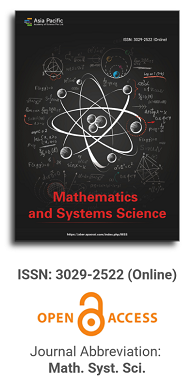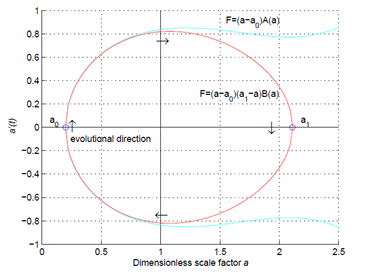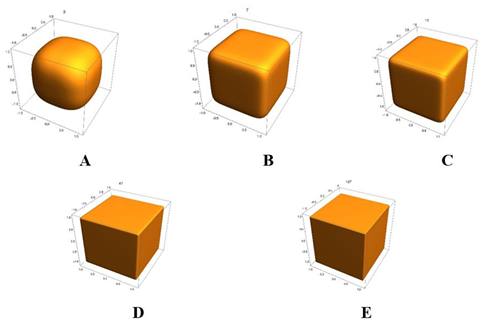


Optimal deployment
Vol 3, Issue 1, 2025
Download PDF
Abstract
The optimal size of a military force to send to the battle field is determined. The objective function includes the cost of deployment, the cost of the time it takes to win the battle, and the costs of killed and wounded soldiers with equipment. The cost of deployment is an explicit function of the number of deployed troops and the value of a victory with access to a free territory, is a function of the length of the time it takes to win the battle. The cost of lost troops and equipment, is a function of the size of the reduction of these lives and resources. An objective function, based on these values and costs, is optimized, under different parameter assumptions. The battle dynamics is modeled via the Lanchester differential equation system based on the principles of directed fire. First, the deterministic problem is solved analytically, via derivations and comparative statics analysis. General mathematical results are reported, including the directions of changes of the optimal deployment decisions, under the influence of alternative types of parameter changes. Then, the first order optimum condition from the analytical model, in combination with numerically specified parameter values, is used to determine optimal values of the levels of deployment in different situations. A concrete numerical case, based on the Battle of Iwo Jima, during WW Ⅱ, is analyzed, and the optimal deployment decisions of the attacker, BLUE, are determined under different assumptions. The known attrition coefficients of both armies, BLUE, and the defender, RED, and the initial size of the RED force, are parameters. The optimal solutions are found via Newton- Raphson iteration. Finally, a stochastic version of the optimal deployment problem is defined, where the attrition parameters are considered as stochastic, before the deployment decisions have been made.
Keywords
References
- Shatz HJ. Economic Competition in the 21st Century. RAND Corporation; 2020.
- Iannelli M, Pugliese A. Competition among species. An Introduction to Mathematical Population Dynamics. 2014; 79. doi: 10.1007/978-3-319-03026-5_7
- Washburn A, Kress M. Combat Modeling. Springer; 2009.
- Lohmander P. Optimal Dynamic Control of Proxy War Arms Support. Automation. 2023; 4(1): 31–56. doi: 10.3390/automation4010004
- Lohmander P. Four central military decision problems, General methods and solutions. The Royal Swedish Academy of War Sciences Proceedings and Journal. 2019; 2: 119–134.
- Lohmander P. Optimal decisions and expected values in two player zero sum games with diagonal game matrixes—Explicit functions, general proofs and effects of parameter estimation errors. International Robotics and Automation Journal. 2019; 5: 186–198.
- Lanchester FW. Aircraft in Warfare: The Dawn of the Fourth Arm. Constable; 1916.
- Engel JH. A Verification of Lanchester’s Law. Journal of the Operations Research Society of America. 1954; 2(2): 163–171.
- Bracken J. Lanchester models of Ardennes Campaign. Naval Research Logistics. 1995; 42: 559–577.
- Tam JH. Application of Lanchester combat model in the Ardennes campaign. Natural Resource Modeling. 1998; 11: 95–116. doi: 10.1111/j.1939-7445.1998.tb00302.x
- Hung CY, Yang G, Deng P, et al. Fitting Lanchester’s square law to the Ardennes Campaign. Journal of the Operations Research Society of America. 2005; 56: 942–946. doi: 10.1057/palgrave.jors.2601878
- Stymfal MG. Revisiting Engel’s verification of Lanchester’s square law using battle of Iwo Jima data [Master’s thesis]. Naval Postgraduate School; 2022.
- Braun M. Differential Equations and Their Applications, Springer; 1993.
- Lohmander P. Attrition coefficient estimations via differential equation systems, initial and terminal conditions, and nonlinear iterative equation system solutions. Journal of Statistics and Computer Science. 2024; 3(1): 51–78.
- Rothschild M, Stiglitz JE. Increasing risk: Ⅰ. A definition. Journal of Economic Theory. 1970; 2(3): 225–243. doi: 10.1016/0022-0531(70)90038-4
- Rothschild M, Stiglitz JE. Increasing risk Ⅱ: Its economic consequences. Journal of Economic Theory. 1971; 3(1): 66–84. doi: 10.1016/0022-0531(71)90034-2
- Lohmander P. Continuous extraction under risk. Journal of Mathematical Modelling and Simulation in Systems Analysis. 1988; 5(2): 131–151.
- Jensen JLWV. On convex functions and inequalities between mean values (French). Acta Math. 1906; 30: 175–193. doi: 10.1007/BF02418571
- Taylor JG. Optimal Commitment of Forces in Some Lanchester-Type Combat Models. Operations Research. 1979; 27(1): 96–114.
- Chan P. The Lanchester Square Law: Its Implications for Force Structure and Force Preparation of Singapore’s Operationally-Ready Soldiers, Pointer. Journal of the Singapore Armed Forces. 2016; 42(2).
- Minguela-Castro G, Ruben H, Carlos C. Automated Support for Battle Operational–Strategic Decision-Making. Mathematics. 2021; 9(13): 1534. doi: 10.3390/math9131534
- Lystopadova V, Khalaim D. (2023) Application of Lanchester’s mathematical laws in military strategy (Ukrainian). Osvita. Innovatyka. Praktyka. 2023; 11(8): 44–50. doi: 10.31110/2616-650X-vol11i8-007
- Sheeba PS, Ghose D. Optimal resource allocation in conflicts with the Lanchester linear law (2, 1) model. In: Proceedings of the 2008 American Control Conference; 11–13 June 2008; Seattle, WA, USA. pp. 1806–1811.
- Chen X, Qui J. Differential Game for a Class of Warfare Dynamic Systems with Reinforcement Based on Lanchester Equation. Abstract and Applied Analysis. 2014; 8. doi: 10.1155/2014/837431
- Hy MD, Vu MA, Nguyen NH, et al. Optimization in an asymmetric Lanchester (n, 1) model. Journal of Defense Modeling and Simulation: Applications, Methodology, Technology. 2020; 17(1): 117–122. doi: 10.1177/1548512919828553
- Kostic M, Jovanovic A. Lanchester’s differential equations as operational command decision making tools. Serbian Journal of Management. 2023; 18(1): 71–92.
- Spradlin C, Spradlin G. Lanchester’s equations in three dimensions. Computers and Mathematics with Applications. 2007; 53: 999–1011.
- Kress M, Caulkins JP, Feichtinger R, et al. Lanchester model for three-way combat, European Journal of Operational Research. 2018; 264(1): 46–54. doi: 10.1016/j.ejor.2017.07.026
- Kalloniatis AC, Hoek K, Zuparic M, Brede M. Optimising structure in a networked Lanchester Model for Fires and Manoeuvre in Warfare. Journal of the Operational Research Society. 2020; 72(8): 1863–1878. doi: 10.1080/01605682.2020.1745701
- McCartney M. The solution of Lanchester’s equations with inter-battle reinforcement strategies. Physica A: Statistical Mechanics and its Applications. 2022; 586: 126477. doi: 10.1016/j.physa.2021.126477
Supporting Agencies
Copyright (c) 2025 Author(s)
License URL: https://creativecommons.org/licenses/by/4.0/
Editor-in-Chief

Prof. Youssri Hassan Youssri
Cairo University, Egypt
Asia Pacific Academy of Science Pte. Ltd. (APACSCI) specializes in international journal publishing. APACSCI adopts the open access publishing model and provides an important communication bridge for academic groups whose interest fields include engineering, technology, medicine, computer, mathematics, agriculture and forestry, and environment.


.jpg)

.jpg)
